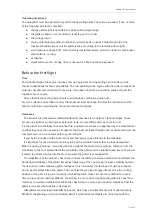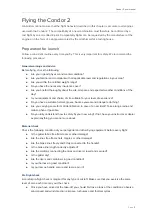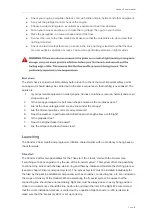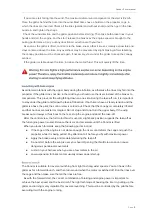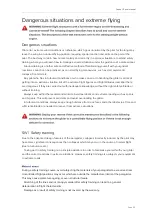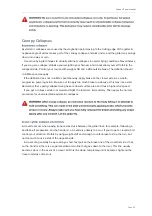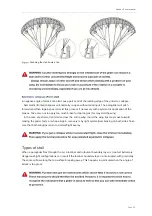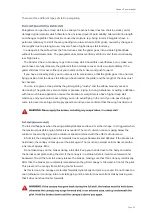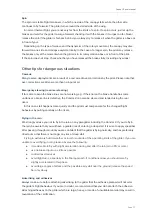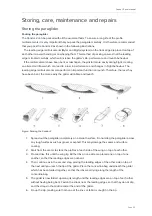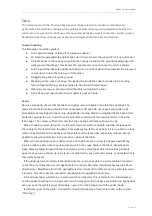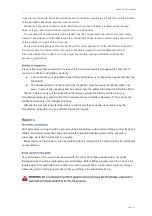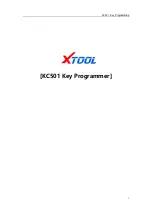
Condor 2 user manual
_____________________________________________________________________________________________________________________________________
Rapid descent techniques
Many
fl
ying situations call for a very rapid descent to avoid a dangerous situation, e.g. the up current
from a cumulus cloud, an approaching cold front or a storm front.
Rapid descent methods should all be practised in calm conditions and at su
ffi
cient altitude so that a
pilot is then able to employ them effectively if extreme conditions arise. Rapid descent techniques are
divided into three different manoeuvres which increase the sink rate in a safe and controllable
manner.
Big ears and spiral dives are generally the most common methods of descent. Big ears can achieve
a moderate rate of descent with the advantage of forward speed and manoeuvrability.
Spiral dives attain higher rates of descent, but the g-forces can be signi
fi
cant and the manoeuvre is
more technically demanding. ‘B-stalls’ have little or no advantages compared to the other methods of
descent and therefore are not recommended in normal situations. Always try to avoid the need to use
these descent techniques. Thoroughly check the conditions before launch, and pay close attention to
how the day develops.
All of these options will also strain your paraglider and should be avoided if you want to preserve
your paraglider. We recommend that you practice the rapid descent techniques under professional
guidance during a safety training course.
The spiral dive is the most effective, but also the most demanding, method for making a rapid
descent, and can allow sink rates of up to 20 m/s to be reached. It is suitable where there is a high
ascent rate and little wind.
The Condor 2 ful
fi
ls the EN spiral dive requirements and has no tendency to remain in a stable spiral
dive under normal conditions. The certi
fi
cation test
fl
ights are carried out with a de
fi
ned carabiner
distance (see chapter "Harness"). Deviations from this setting, unapproved harnesses or spirals with
excessive sink can change the maneuver considerably; pilot action may be required. In such cases,
exit the spiral by weight-shifting to the outside and progressively applying the outside brake.
Before entering a spiral, make sure you have adequate height for recovery. To enter the spiral dive,
weight-shift and progressively apply the inside brake until the glider enters the spiral. As the glider
accelerates into the spiral, centre your weight and control your rate of descent with weight-shift and
outer brake.
To exit the spiral, check your weight is centred (or slightly towards the outside) and progressively
release the inside brake. As the glider starts to exit the spiral, you may also choose to reduce the
pendulum moment by brie
fl
y re-applying the inside brake.
●
●
●
Page 19
Summary of Contents for Condor2
Page 1: ...v1 0 March 2022...
Page 48: ...www gingliders com...






